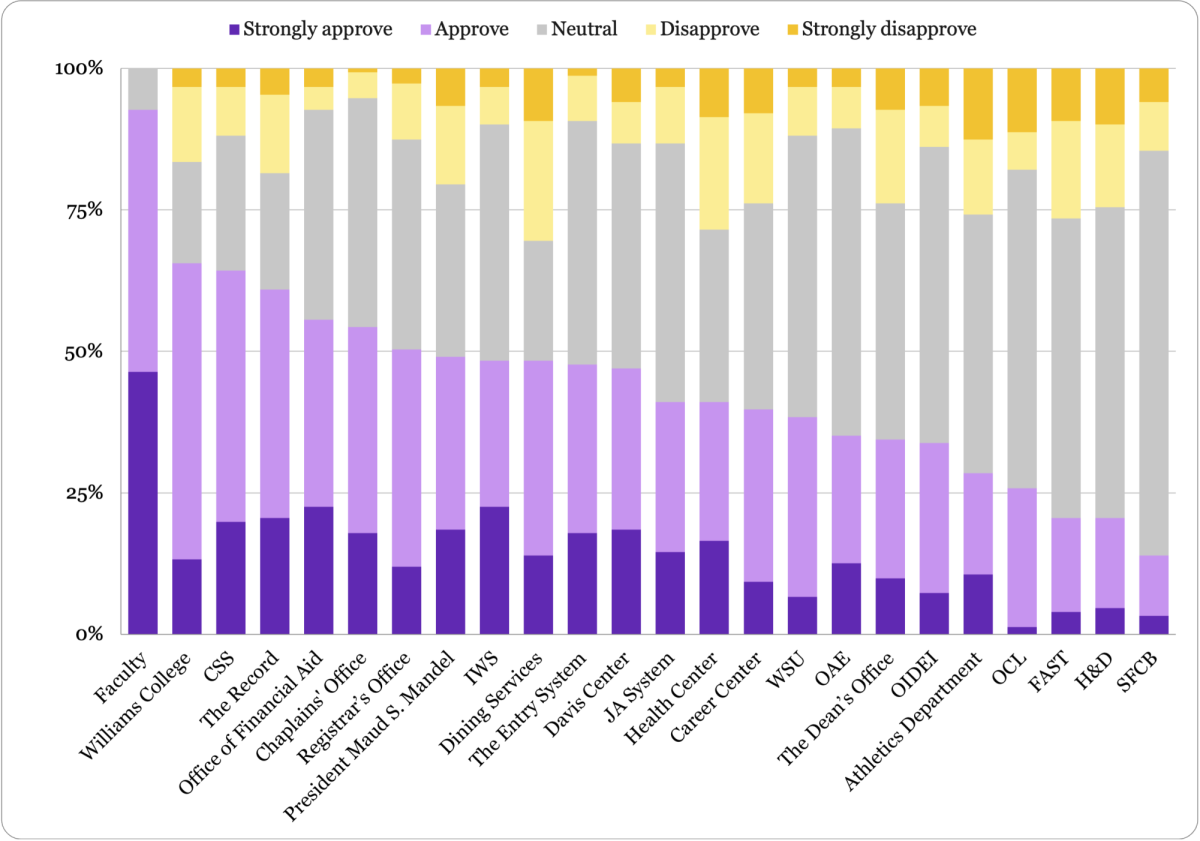The faculty voted last Wednesday to change the weighting of an A+ grade from 4.33 to 4.00. The motion, led by the Committee on Educational Affairs (CEA), was presented at the Feb. 12 faculty meeting by Professor of Philosophy and committee chair Bojana Mladenovic. The motion will go into effect in the fall of 2020, but will not be retroactive; the College will continue to calculate A+ grades earned prior to the fall of 2020 at 4.33.
Mladenovic has chaired the CEA since the fall of 2018. Since her appointment, the committee has engaged in several conversations with students, faculty, the registrar’s office and the dean’s office about changing the A+ calculation.
The CEA presented several justifications for their motions. Mladenovic emphasized that the committee was seeking parity with other peer institutions, citing Amherst College, Swarthmore College, the University of California system, the University of Michigan, Rice University, Duke University, the University of Pennsylvania and the University of Chicago as schools that maintain A+ for internal communicative value only while giving it the numerical value of 4.00.
“Should the proposed change be accepted by the faculty, Williams transcripts would achieve greater legibility and parity with transcripts of our peer institutions,” the CEA wrote in their written proposal to the faculty at large.
Another justification for the proposal centered on fairness to students. The CEA emphasized that some professors have a policy of never giving out A+ grades, some give it out rarely and some regularly award it. “We have some excellent students who just happen to take classes with professors who never give out A+ grades,” Mladenovic said. “It’s unfair.”
The CEA also reported that students applying to graduate schools faced difficulties in reporting their GPA. The College listed their GPA scale as 0 to 4.33, making students with GPAs near 4.0 look weaker in comparison.
Furthermore, the prevalence of A+ grades has risen significantly in the past 15 years. According to the motion, in the 2009-2010 school year, an A+ was given 212 times, while in the 2018-2019 school year, it was given 426 times. “We have no reason to expect this trend to change in the future,” the CEA wrote in its motion. Some faculty present at the meeting noted that professors, concerned about course evaluation surveys, have become more likely to give out A+ grades so students are more likely to be favorable to them and select their class.
The CEA also noted that the unequal distribution of A+ grades had an adverse effect on the valedictorian selection process. According to the CEA, some students select courses in which they know they are capable of receiving an A+ grade in order to better their chances of becoming valedictorian. Students who earn straight A’s in courses for which an A is the highest grade are therefore left out of the running for valedictorian, since for the past several years the valedictorian has had a GPA above 4.00.
The changing of GPA weighting raises larger questions about the criteria for graduation speakers. “I, for one, want to ask the more radical question, which is whether we want the speaker to be selected by GPA,” said Mladenovic. “Do we want to deemphasize the grades by having students select student speakers?”
Not all faculty agreed with the change. Some felt that students who did exceptional work in a class deserved the extra boost to their GPA — if there is a difference between the weight of an 84 percent and an 89 percent, they argued, then why shouldn’t there be one between a 94 percent and a 99 percent? Others felt that this motion did little to address the issue of grade inflation, because now the highest grades would simply compress around a 4.00 GPA instead of a 4.33, creating little differentiation between student GPAs. Several faculty members raised concerns about grade compression around an A, believing that the motion would make it even harder to distinguish among high-achieving students.
Professor of Mathematics Colin Adams was one of the most vocal opponents of the motion, expressing that if the College is going to keep A+ for symbolic purposes, then it should continue to reward those students for their achievements. Instead of changing the weighting of A+, Adams proposed an alternative solution. “The problem we are confronting is not that A+ is worth 4.33. The problem is with the inequitable distribution of A+’s,” he said. “The simple solution is to limit the number of A+’s that any one faculty can give, say as a percentage of their enrollment either over a semester, or a year, or over three years. Then the grade would again have some meaning.”
Adams stated his belief that this vote will result in more A+ grades than ever before, since now, computationally, there is no difference between an A+ and an A grade. He feels it will be even harder to distinguish between students’ performance. “Faculty will feel less compunction to be stingy with A+’s since they are worth the same as A’s. But students will still seek them out even if numerically they are no different than an A because it still looks good on a transcript,” said Adams.
If the number of A+ grades awarded was to increase because of this measure, students applying to law school would be at an advantage, considering that the Law School Admission Council calculates A+ grades for a higher value regardless of the College’s calculation.
The passing of the motion is final and binding, so changes to GPA weighting are officially going into effect next semester. While its long-term effects are still unclear, Mladenovic is confident about a positive outcome. “This was a step in the right direction for Williams in comparison to other schools in terms of parity and equity in transcripts,” Mladenovic said.








